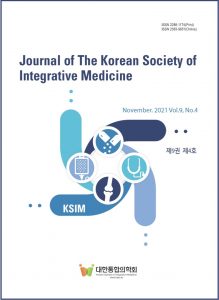Publications

Comparison of Craniovertebral Angle and Muscle Properties after Smartphone Use in Healthy Individuals with and without Forward Head Posture
Authors: Dongyoon Son, Woochan Chun, Sookyoung Park
Affiliations: Department of Physical Therapy, Woosong University
Journal: Journal of The Korean Society of Integrative Medicine - November 2021, Volume 9, Issue 4, Pages 149-158 (DOI: 10.15268/ksim.2021.9.4.149)
-
Field & Applications:
- Medical
- Balance / Postural control
- Temporomandibular disorder
Purpose: Forward head posture (FHP) is one of the most common postural malalignment of the cranio-cervical region. Previous studies have reported that FHP might affect both temporomandibular joint (TMJ) and cervical muscles, but still remains unclear. The purpose of this study was to compare the changes of craniovertebral angle (CVA) and muscle properties after smartphone use in healthy individuals with and without FHP.
Methods: Fifteen healthy individuals aged 18 to 22 years were included. CVA was evaluated using Dartfish motion analysis, and the subjects were divided into two groups according to their CVA: a FHP group (n = 7, CVA less than 48 °) and a control group (n = 8, CVA more than 48 °). MyotonPro was used to measure muscle properties of masseter, digastric and sternocleidomastoid muscles (SCM). Each subject underwent 15-minutes of smartphone task (web browsing or video watching) in relaxed sitting posture. CVA and muscles properties were assessed both before and after the smartphone task.
Results: There were significant changes in post measurements of CVA between the groups. Masseter muscle showed significant differences in pre and post measurements of all muscle properties, and digastric muscle showed significance only in muscle tone. Amount of changes (post-pre), however, showed no significant difference in this study.
Conclusion: 15-minutes of smartphone task did not affect CVA and muscle properties of masseter, digastric and SCM in both groups, however, there were significant changes in pre and post measurements of CVA and some muscle properties of masseter and digastric muscles. Therefore, CVA, masseter and digastric muscles might be significantly changed in a heavy duration of smartphone usage more than 15-minutes. Further studies are needed regarding duration of smartphone task, assessments in other various TMJ muscle groups, and participants with pathological FHP conditions.
Keywords: forward head posture, muscle properties, smartphone, temporomandibular joint
FHP induced by 15-minutes of temporary smartphone task did not affect CVA and muscle properties of masseter, digastric and SCM regardless of the head posture. However, there were significant changes in pre and post measurements of CVA and some muscle properties of masseter and digastric muscles between groups. We assumed that 15-minutes of smartphone task was insufficient duration to observe significance, therefore, CVA, masseter and digastric muscles might be significantly changed in a heavy duration of smartphone usage. Further studies are needed regarding experimental task duration, assessments in other various TMJ muscle groups, interrelationship between FHP and TMJ muscles, and participants with pathological FHP conditions.


